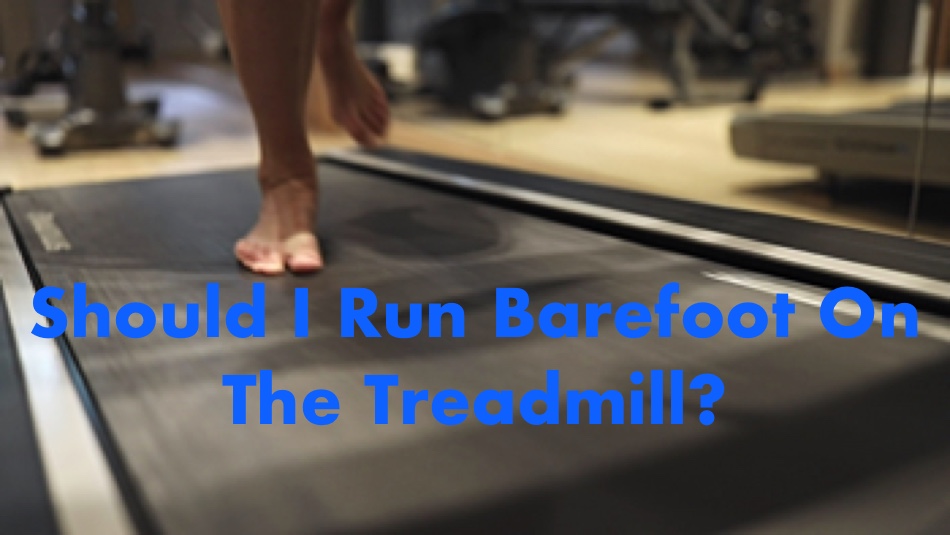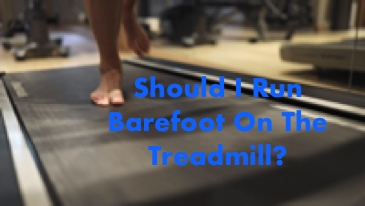
Should I Run Barefoot On The Treadmill?
Table of Contents
Depending on where you live in the world, there may inevitably come a time when running outdoors is not an option that is immediately available to you. It could be weather, location or simply the timing of your barefoot run. I have been in that situation where going for a run was not an option, and I was left with the thought of using the treadmill in the hotel. This left me faced with the question:
Should I run Barefoot on the Treadmill? You should run on a treadmill barefoot yes. Factor in your running style and the setup of the treadmill as these vary greatly in running deck size and shock absorption. Keep your feet on the middle of the deck, away from the edges. Run in short burst as treadmills get hot and are rough on bare feet.
If you bear this in mind you should be fine. Running on the treadmill is a lot different from when you are outdoors.
There are so many other factors I didn’t realise you had to factor into your treadmill setup before setting off on the run barefoot. These things you just don’t think about when you have shoes on. This article will give you everything that you need to get you started.
Things to Know Before You Run On The Treadmill
Not all Treadmills Are The Same
That statement sounds like an obvious one, but it is true. We will go into the things you should care about in the section below that will aid you in getting yourself set up properly. Treadmills come in different sizes and capabilities depending on where you are (Big Hotel or a home) that will determine what you can do setup-wise.
Shock absorption is a big factor as the better they are in the treadmill, the less negative impact it will have on your joints. The cheaper variation will usually have a lot less effective shock absorption. Once again bear this in mind and restrict your time on the treadmill as required.
Your Running Area Is Restricted
Running on a treadmill can be restrictive at best. During a run, I found that I was wary of stubbing my toe on the front part of the running plate at the top of the running belt. To deal with this, I think a good idea is to stretch your arm out and set a distance within easy reach of the controls.
Then begin with an easy stride and maintain that same distance throughout the run. Be careful not to head too far back, so you don’t stride off the running belt.
The Treadmill Belts Gets Hot
Yes believe it or not its something you will have to factor in that would never have been an issue if you were wearing thick soled shoes. The running surface of a treadmill is very abrasive because they were built with shoes in mind to handle traction.
All the guts of the treadmill are under the belt; these include the motor the pulleys and suspension parts. Continuous use will cause the best of Running surfaces to heat up in a way that just would not happen if you went for a run outside.
Your feet will very quickly notice the change in temperature with is good. A good way to overcome this would be to time your run and a soon as you feel the temp creeping up, stop or move to an unused treadmill if you can or wait for the machine to cool down.
Treadmills Are Unrelenting
Running on the perfectly formed relatively even and uniform surface of the treadmill will have the effect of stressing the same part of the foot over and over again. This is part of what leads to getting injured. When you run out on the road, there are ever so slight but important changes of angle due to the change in surface elevation and terrain.
This has the effect of distributing the stress forces all over the foot instead of to just one are over a sustained period. Making it easier for you to potentially run for longer.
A simple trick to overcome this would be to change the incline and speed at very short intervals (every 1-2 mins) to try to reduce the stress on the feet. The more you mix it up, the better.
The Belt Hurtles Towards You At Speed
One of the unique things about a treadmill is that the surface comes towards you. This is unlike in real life where your feet go seeking the surface, and you propel yourself forwards. Running on a treadmill especially barefoot tends to stress more on the toes making you push off less from the balls of your feet.
A simple fix for this would be to start running off more at a reduced speed on an incline and then slowly level out as you get you more comfortable driving from forefoot instead of your toes.
Treadmill Basics For Barefoot Running
Basic Treadmill Types
For simplicity, I will just divide them into the four main types:
- Electronic Treadmills: Powered by electricity and found everywhere from the home to the big commercial gym.
- Manual Treadmills: These are self-powered and a lot newer on the scene that the electrical treadmills. They tend to be the curved type that is supposed to engage a lot more muscle groups.
- Hybrid: These are a cross between more than one equipment type. For example a treadmill and an elliptical machine or a treadmill and a stair climber. Each one is a bit different, and you get the best of both worlds.
- Medical Treadmills: As the name infers theses are built a lot more robustly and with a lot fewer moving parts to reduce wear and tear. Since they are required to be accurate at all time, they have a lot of digital element built into their construction. They are specifically made to work with precisely calibrated medical equipment.
Running Deck Length
The Average length of a treadmill deck is 64inches long. The running Deck is the piece of, wooden board most probably MDF (medium density fibreboard) that you stand on when you get on the treadmill. The running deck supports and takes the impact of your feet when you are running. It sits just beneath the moving treadmill belt.
The length of the treadmill running deck need to be taken into account when you are planning your barefoot run, the longer the better. Most big gyms have a long enough Running deck of 64inches.
Running Deck Width
The average width of a Treadmill is 28inches across this is for the running track only. The remaining measurement will vary depending on the model. This measurement is sufficient for you to run relatively comfortably barefoot.
You will no doubt have the make suitable adjustments if you are working with a smaller treadmill. The more space you have to freely manoeuvre the better for your running experience and the safer.
Running Belt Texture
The Treadmill belt texture and surface area will need close attention for the following reasons. It was made for running shoes with grips of all shapes and sizes. In all probability, your feet will not be used to such a rough surface so bear that and mind and limit your time on the treadmill accordingly.
Also, remember that the shoes that would have been on the treadmill before you could have been anywhere. They could have been in the mud, outside and you have no idea where else. You may want to give the surface a quick wipe down too.
Treadmill Shock Absorption
As I said, earlier all treadmills are not created equal. One of the main differences is in the type and level of sophistication of the shock absorption. The two main types are essentially rubber cushioning or a system of swingarms.
The better the quality in the treadmill the more protection for your body and joints as you run. This will allow you to enjoy using the treadmill more with less long-term effect from the impact of poor shock absorption.
To get your running form dialled in, check my post on barefoot running for beginners here
Related Questions
Can you Run With Socks On A Treadmill? You can run on the treadmill with your socks. The same care and attention needed if you were barefoot will apply in this case too.Be careful with the reduced grip you will experience because of the socks you are wearing. With the grippy surface, your sock is at risk of getting caught in the belt.
Do You Have To Wear Shoes On A Treadmill? You don’t have to wear shoes on a treadmill, no. Given that treadmills were designed with shoe wearers primarily in mind, you will get the most out of the treadmill if you are wearing shoes of some sort. Your feet will be covered and well protected as you run. Bear this in mind before you begin.
Can You Get Blisters From Running Barefoot On A Treadmill? Yes, you can get blisters from running barefoot on a treadmill. The highly abrasive surface was not designed to be used with an unshod foot. Also, treadmills by design generate a lot of heat from a combination of the moving part under the belt. These include the motor, suspension and roller systems.
All this will add to the heat that will be generated making it even easier to get blisters.
